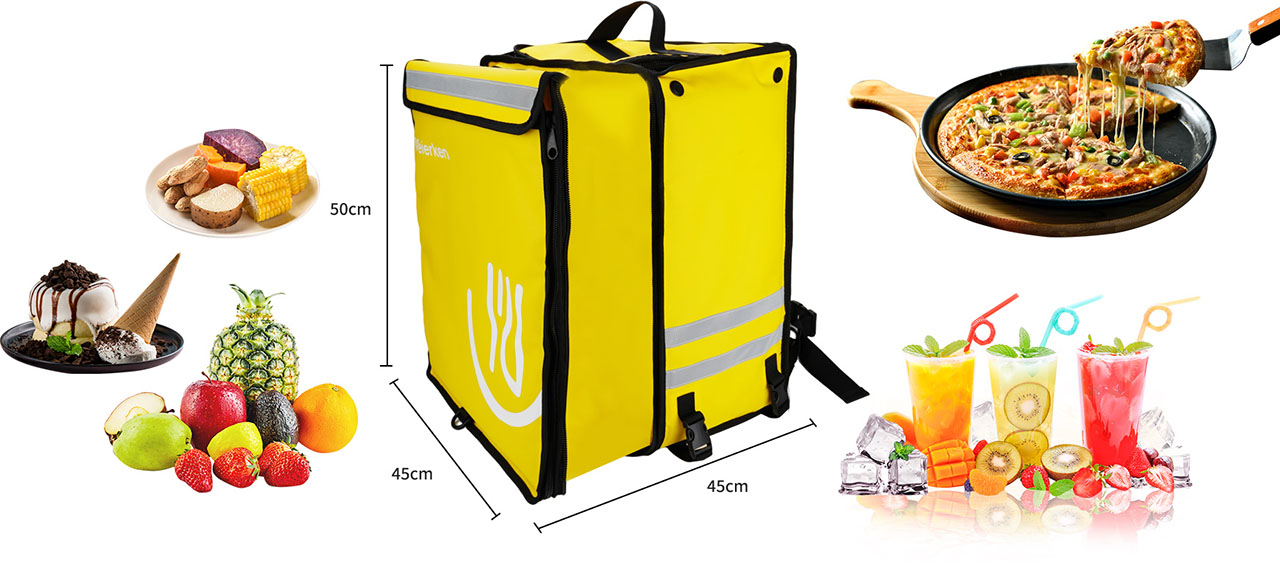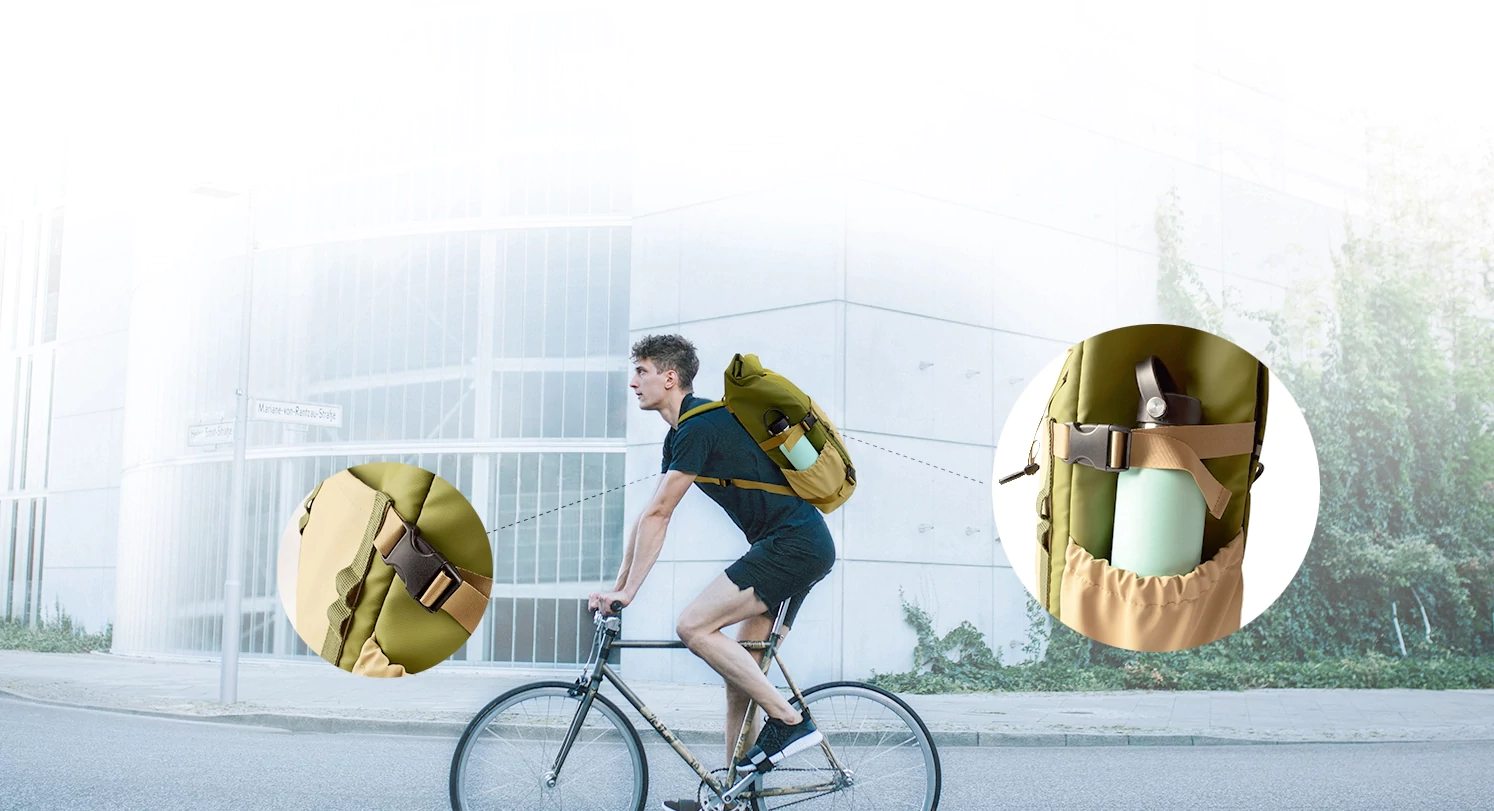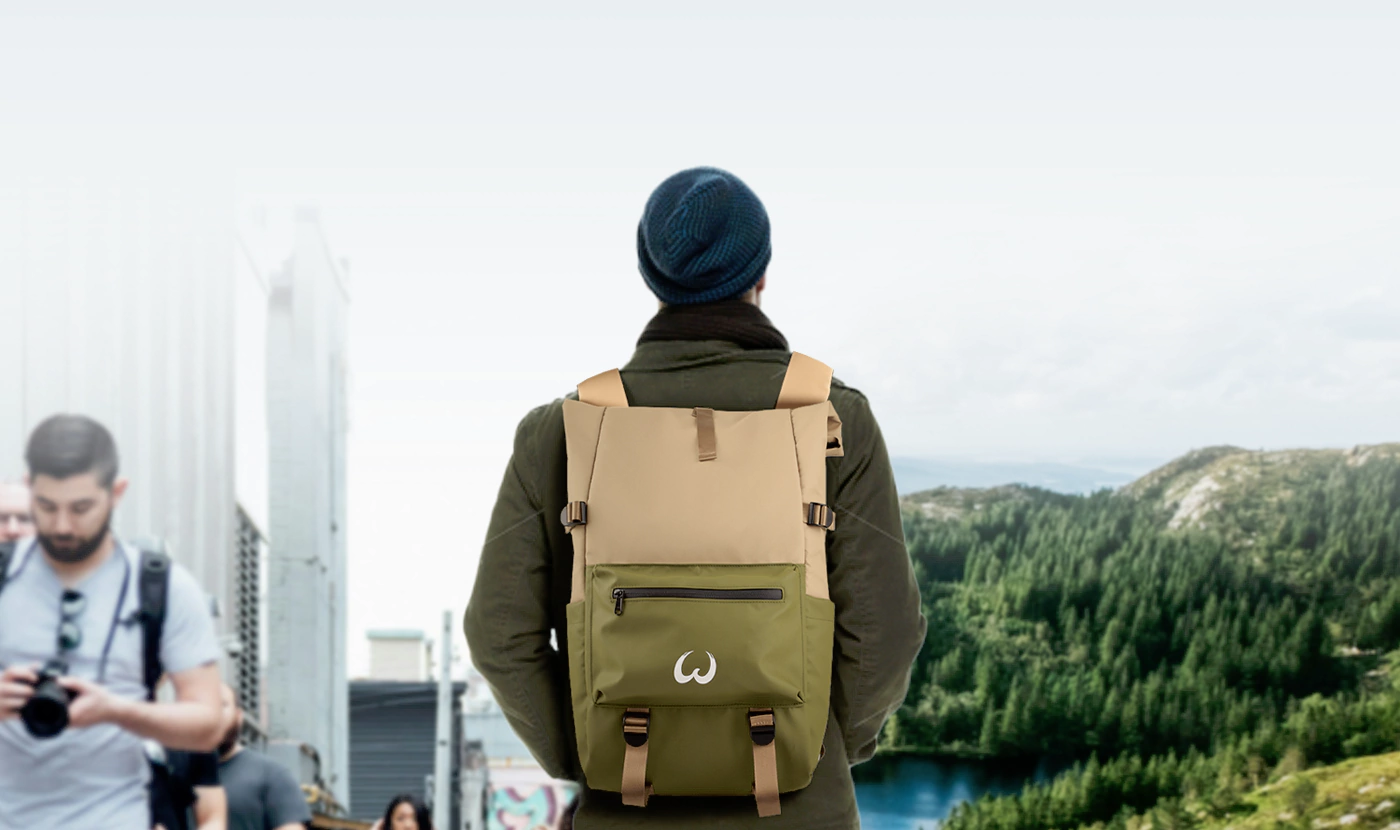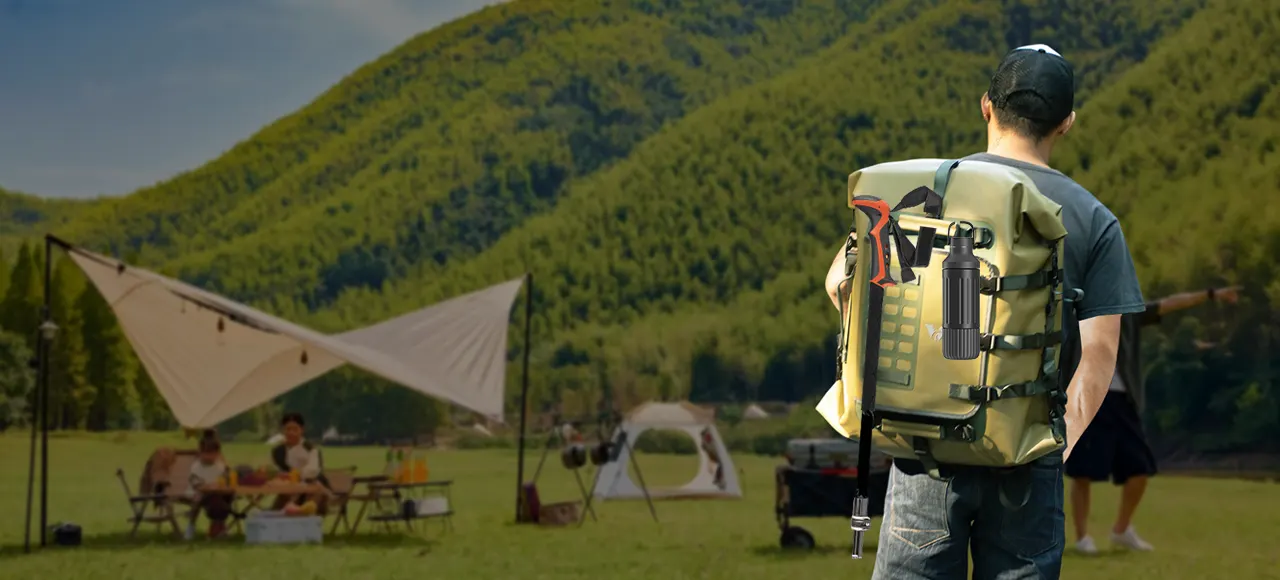Walking through a trade show, I observed countless brands showcasing their waterproof dry bags and submersible backpacks. What stood out wasn’t the variety of designs—it was the dramatic differences in quality. Some zippers showed signs of corrosion after minimal saltwater exposure; welded seams separated under light stress. These aren’t just minor flaws. They are issues that can destroy a brand’s reputation.
Choosing the wrong ODM waterproof bag manufacturer doesn’t only cost you money—it can cost you customers. The industry is full of suppliers who claim expertise in waterproof technology, yet few possess the real technical capability to deliver. I’ve seen one brand learn this lesson the hard way when their adventure backpack line failed during monsoon testing. The result: $80,000 in lost inventory and a broken relationship with a key retailer.
The real challenge isn’t about finding just any factory. It’s about identifying a manufacturing partner who recognizes that waterproof bag production must balance technical precision with commercial viability. In this guide, we break down five non-negotiable criteria that distinguish true specialists from those relying on hollow marketing claims. We’ll also look at how manufacturers like Weierken have built their reputations by mastering these essential requirements.
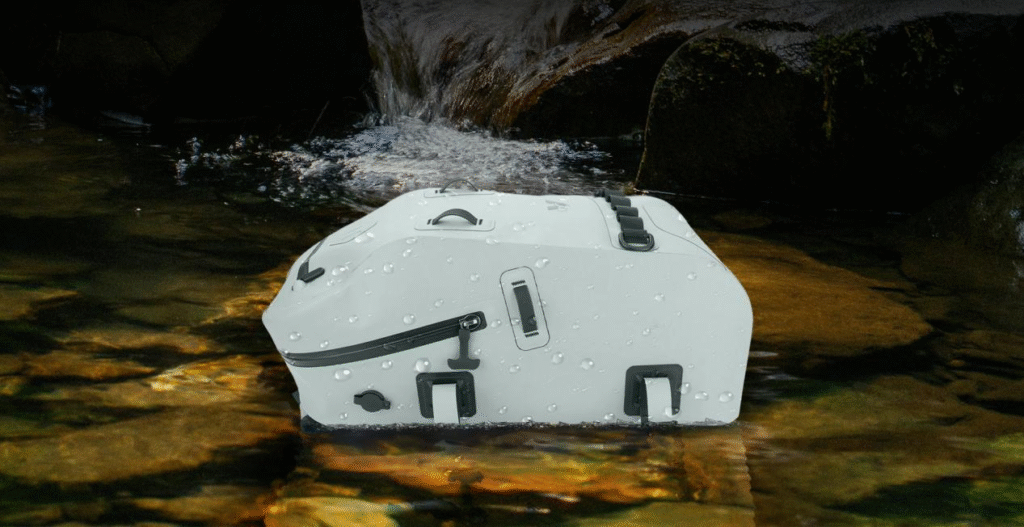
5 Deeper Metrics for Evaluating Waterproof Bag ODMs
1. Waterproof Technology Expertise: Beyond Basic Claims
The term “waterproof” is dangerously overused. True expertise begins with understanding that different applications demand different protection levels.
High-Frequency Welding vs. Sewn Seams
High-frequency welding creates molecular bonds between material layers, eliminating needle holes that compromise water resistance. Superior factories employ ultrasonic welding for critical stress points
Seam taping quality varies dramatically—look for 45mm tape width standards versus the cheaper 25mm alternatives common in mass production
Pressure testing protocols should simulate real-world conditions, not just laboratory environments
IPX Certification Understanding
IPX-7 (submersion to 1 meter for 30 minutes) represents the minimum viable standard for outdoor bags
IPX-8 certification requires independent verification—don’t accept factory self-certification
Actual testing evidence should include cycle testing (repeated submersion) and temperature variation resistance
Weierken’s approach exemplifies this specialization—their quality lab includes customized pressure chambers that simulate depths to 5 meters, exceeding standard certification requirements. This technical rigor prevented a potential recall for their dive equipment client when discovered material weakness during extended saltwater immersion tests.
2. R&D Responsiveness: From Concept to Sample at Market Speed
The outdoor industry moves quickly—your manufacturing partner must keep pace without compromising quality.
Design Team Configuration
Look for cross-functional teams combining materials engineers, industrial designers, and production specialists
3D modeling capabilities should include photorealistic rendering for marketing collateral development
Structural engineering input prevents common failures points like stress concentration around attachment points
Prototyping Velocity
7-day sampling cycles require integrated material inventory and dedicated prototyping equipment
Iteration documentation should track design changes, material substitutions, and performance impacts
User testing integration during sampling—Weierken partners with local adventure guides for real-world validation alongside laboratory testing
One notable case involved a travel brand needing emergency redesigns when their original waterproof backpack design failed airport handling tests. Weierken’s team delivered three iterative samples within 15 days, implementing reinforced corner protection and modified strap attachments that survived drop tests from 4 meters.
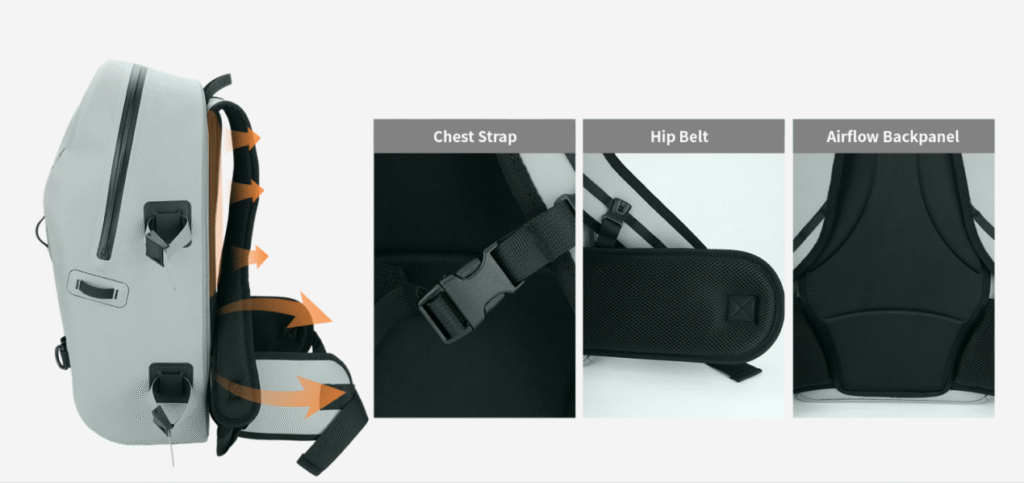
3. Material Knowledge: The Foundation of Waterproof Performance
Not all waterproof materials perform equally across environments. Temperature extremes, UV exposure, and abrasion resistance requirements vary significantly.
Technical Fabric Selection
TPU-laminated fabrics offer superior cold-crack resistance (testing to -30°C) compared to PVC alternatives
Denier ratings misunderstanding—higher numbers don’t always mean better performance. 500D polyester may outperform 1000D variants with inferior coating
Specialized material applications—such as EVA foam padding for impact protection while maintaining flexibility
Supply Chain Transparency
Material traceability from certified mills prevents quality inconsistencies
Coating technology partnerships with chemical suppliers like Bayer ensure consistent waterproofing performance
Inventory strategy for specialized materials—Weierken maintains strategic stock of Kaypu laminates and YKK waterproof zippers to prevent production delays
The material knowledge depth became critical when a client needed bags for Arctic expeditions. Standard materials became brittle at -25°C, but Weierken’s specification of a specialized TPU-nylon composite maintained flexibility at -40°C without compromising waterproof integrity.
4. Quality Control Systems: The Invisible Differentiator
Quality isn’t inspected in—it’s manufactured in. Robust systems prevent rather than detect failures.
8-Stage Inspection Protocol
Incoming material verification including coating thickness measurement and roll-to-roll consistency checks
Cutting panel alignment ensuring grain direction optimization for stress distribution
Pre-welding surface preparation with specialized cleaning solutions
Welding parameter validation including temperature, pressure, and duration monitoring
Seam integrity testing using air inflation and pressure holding
Component assembly verification including buckle strength and zipper smoothness
Final waterproof validation through statistical sampling for extended submersion testing
Packaging durability assessment ensuring products survive logistics chain handling
Documentation Standards
Failure mode tracking with statistical analysis of defect patterns
Corrective action implementation timelines measuring effectiveness of quality improvements
Batch traceability systems enabling targeted recalls if needed
Weierken’s quality dashboard provides clients with real-time access to their production quality metrics—an transparency level that helped one outdoor brand confidently expand into European regulatory environments requiring detailed manufacturing documentation.
5. Scalable Customization: Balancing Flexibility and Efficiency
The ODM waterproof bag market demands both uniqueness and competitiveness—achieving both requires manufacturing sophistication.
Flexible Production Architecture
Modular design principles enabling component sharing across product lines to maintain economies of scale
Cell-based manufacturing organization allowing parallel production of different custom projects
Advanced planning systems that optimize material utilization across multiple client projects
Minimum Order Quantity Strategy
Material-backed MOQs rather than arbitrary quantity requirements
Shared production runs for clients with complementary color schemes or material requirements
Component inventory optimization reducing MOQs for standard sizes while maintaining customization options
One successful implementation involved a startup needing only 300 units per colorway across 12 different adventure sports applications. Weierken’s flexible approach used standardized base components with customized waterproof zippers and branding elements, achieving viability at 40% below traditional MOQ thresholds.
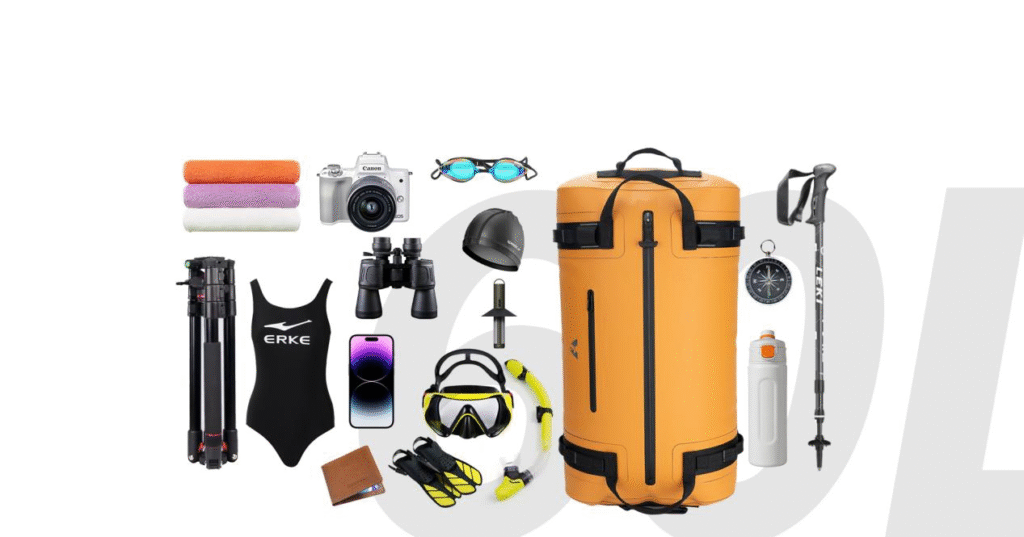
Partnership Beyond Production
Selecting your ODM waterproof bag manufacturer requires looking beyond specifications and pricing. The five criteria outlined represent interconnected competencies that collectively determine your product’s market success. True manufacturing partners like Weierken demonstrate these capabilities through documented processes, client references, and transparent operations.
The waterproof bag market continues evolving with new material technologies and manufacturing techniques. Your chosen partner should not only meet current needs but demonstrate the capacity for innovation and continuous improvement. The difference between a supplier and a partner becomes evident when problems inevitably arise—the former makes excuses, while the former presents solutions backed by technical understanding and systematic approaches.
Frequently Asked Questions
Q1: What is the realistic minimum order quantity for custom ODM waterproof bag designs?
A: True custom designs typically start at 500-800 units depending on material complexity. However, sophisticated manufacturers like Weierken offer modular design systems that can reduce effective MOQs to 300 units through component sharing across product lines while maintaining customization options for colors, branding, and critical features.
Q2: How do you validate IPX waterproof ratings from manufacturers?
A: Require third-party certification from recognized laboratories like SGS or TÜV. Additionally, conduct random batch testing through independent facilities. Weierken provides clients with video documentation of testing processes and allows client representatives to witness testing protocols firsthand during factory audits.
Q3: What is the typical timeline from concept to production-ready samples?
A: For established manufacturers, initial prototypes typically require 7-10 days, with 2-3 iteration cycles adding 10-15 additional days. Production-ready samples with full documentation generally take 3-4 weeks. Weierken’s record for a complex diving bag project involved 5 iterative improvements within 18 days through parallel processing and dedicated technical teams.
Q4: How do manufacturers ensure color consistency across production batches?
A: Superior manufacturers employ spectrophotometer analysis with tolerance limits below ΔE 2.0, maintain dye lot documentation, and implement mass coloration rather than piece dyeing. Weierken’s textile lab conducts colorfastness testing including UV exposure, chlorinated water, and abrasion resistance to ensure color durability matches waterproof performance.
Q5: What sustainable material options exist for waterproof bags without compromising performance?
A: TPU-coated recycled nylon (often using ocean-bound plastics) maintains performance while reducing environmental impact. Additionally, solution-dyed fabrics reduce water consumption during production. Weierken has developed specialized recycled material systems that achieve IPX-8 protection while containing 70% recycled content, with complete documentation through GRS certification.

